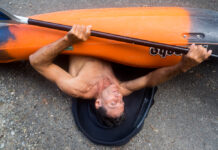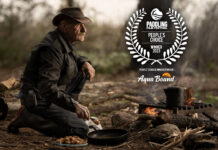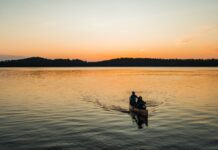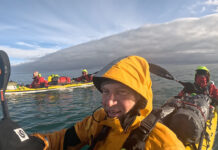For years the growth of canoeing has been flat. The activity enjoyed mainstream popularity in the 1970s and ‘80s after John Boorman’s Deliverance sent Jon Voight, Burt Reynolds and Ned Beatty into the soon to be dammed Cahulawassee River Valley. Thousands of Baby Boomers across North America flooded the rivers and lakewater routes on their own wilderness canoe adventures.
In 1960, two percent of Americans participated in canoeing and kayaking. Twenty years later by the early ‘80s, thanks to John Boorman, the development of a revolutionary, inexpensive and virtually indestructible canoe material and Baby Boomers venturing into the backcountry with their young families, the national canoeing participation number had risen to eight percent. Canoeing was hot.
It was a pretty good 20-year run for canoe builders. But between 1998 and 2002, kayaking took hold of the paddlesports market. During that period, The Sporting Goods Manufacturers Association recorded a 59 percent growth in kayaking participation. Conversely, canoeing dropped in popularity with a 20 percent loss in participation. The ubiquitous, fringe sport of wave surfing with a paddle turned mainstream with the advent of the standup paddleboard. According to Google Trends, “SUP” searches grew 61 percent between 2004 and 2016. Searches for “canoes” decreased 80 percent in the same period.
In 2006, a mere 3.3 percent of the United States population participated in canoeing. By 2014, the participation number was 3.4—up slightly but not by a significant margin.
Finally, after years of stagnation, early signs suggest canoeing is peaking people’s interest again. For the first time in more than two decades, the future of canoeing looks bright.
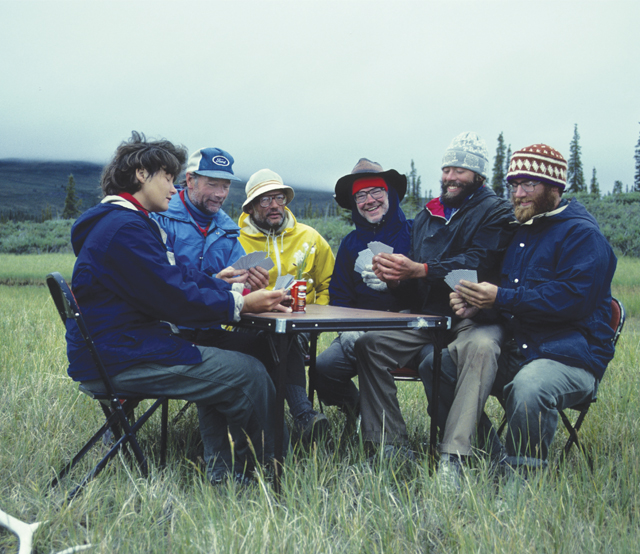
The First Indicator the future of canoeing participation is looking up seems to originate from the fact that people are once again buying canoes.
Jason Yarrington, founder of the Trailhead Paddle Shack in Ottawa, says he’s seen canoe sales rise by 20 percent in the last two to three years. “The original Kevlar canoes are on their dying legs,” says Yarrington. “They’re starting to wear out and people are now looking at new canoes 15 to 20 years later.”
Even if these old canoes aren’t wearing out, canoeists aren’t hesitating to replace them, or buy more. Manufacturers too, are noticing the early stages of what they are hoping is a trend.
“This year seems to be a boom canoe year,” says Bill Kueper, vice president at Wenonah Canoe. “There seems to be resurgence especially for high-end boats.”
“This year seems to be a boom canoe year,” says Bill Kueper, vice president at Wenonah Canoe. “There seems to be resurgence especially for high-end boats.”
Lightweight and performance canoes are what Kueper says prospective canoe buyers are looking for.
“People are getting really nice boats; they’re investing in it,” says Kueper, who predicts continued growth in the future canoe market.
Not only are sales increasing because old canoes need replacing, Kueper thinks this boom is due to an entirely different factor—young adults with money. “They’re looking at canoeing as a viable place to put some of their hard-earned dollars,” says Kueper.
In past years, Wenonah Canoe’s average customer was anywhere between 40-65 years old. “I think now we’re getting customers younger than that,” says Kueper.
“If you listen to the public dialogue, your typical canoeist is old and male,” says Jason Zabokrtsky, owner of the Ely Outfitting Company. He has been guiding canoe trips in Minnesota’s Northwoods since 1997. “That message is so prevalent, I’ve had people come off the trail and comment on how many young people they encountered.”
During the 2016 canoe season, Zabokrtsky collected user data from 1,000 clients at the Boundary Waters Canoe Area. What he found was surprising. The average age of Ely Outfitting Company customers was 29.
“We’re not positioning ourselves to target young people,” Zabokrtsky insists. “But they’re coming as couples and groups of friends. They are driving up from the cities to go on canoe trips and are willing to pay for full outfitting and great rental equipment.”
Zaborktsky, who in 2016 outfitted twice as many under-30 Millennials as 50-plus Baby Boomers, is one of many outfitters witnessing a younger generation discovering canoeing.
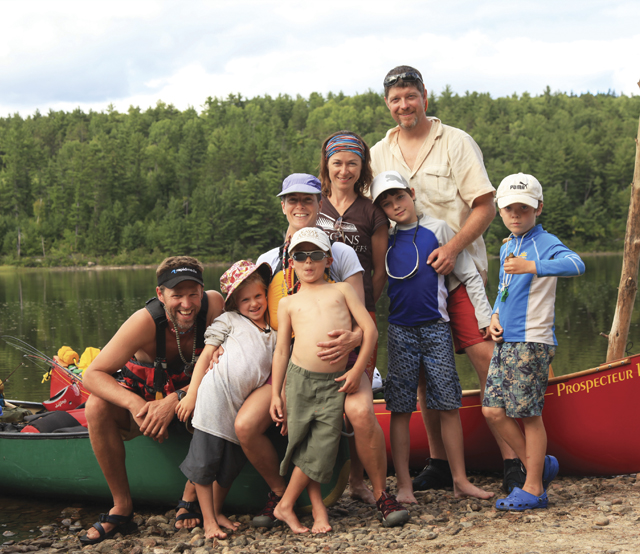
A closer look at the data seems to suggest the Millennial magic is real. According to the 2017 United States Physical Activity Council Report, canoeing made the top-10 list for “activities of interest” for people aged 25-34. Canoeing was rated seventh on the list, higher than using workout machines or weights and fishing. According to the same study, 57 percent of Millennials participate in outdoor sports, compared to only 39 percent of Boomers. Toss in the simple fact that there are half a million more Millennials than Boomers in America and the growth potential of canoeing looks even brighter.
With the younger generation comes an obsession with social media. Rather than a distraction,
this is actually helping boost the popularity of canoeing. The sport is increasingly appearing in online listicles, Pinterest DIY projects and in dreamy wanderlust photos floating around social media feeds. On Instagram, the hashtag #canoe has reached nearly 650,000 posts.
Ever heard of a lumbersexual? According to Urban Dictionary, a popular tongue-in-cheek online dictionary, this common outdoor stereotype is defined as “A not-so-manly man dressing like a lumberjack, sporting a beard that has the volume of a lumberjack’s beard and the groom of a hipster.”
Although these types may seem a nuisance, riding their squeaky vintage bicycles through city streets radiating faux-moss musk, their rustic image is actually helping canoeing regain its lost popularity with the masses. Aside from man buns, lumbersexuals don’t look much different than canoeists from the heyday of the ‘80s.
Vacation time is in short supply these days. The Project: Time Off Coalition, a group of organizations committed to changing the behavior of Americans about their vacation time, found that Americans today are taking less time off work. This may be one factor contributing to canoe trips that are on average shorter now than they were 20 years ago.
The Project found that in 2000, vacation lengths began a steady decline. America’s average vacation usage is 16 days per year, almost a full week less than the average during the canoe boom years of 1978 to 2000.
Tierney Angus, 29, and her 30-year-old fiancé Andrew Bell, don’t let busy work schedules discourage their shared passion for canoeing. As youngsters, Angus lilydipped at the cottage and Bell went to summer camp.
“The majority of our friends only get two weeks off from work and that’s it,” says Angus, a Humber College journalism student. “They get out on weekends and maybe for four- or five-day trips. It’s definitely difficult to find larger chunks of time to devote to paddling. But the more canoe trips they go on, the more they want to stay out for longer.”
Angus and Bell devote as many free weekends to canoeing as possible in preparation for one big trip each year, usually lasting a minimum of 14 days.
“It’s like anything else,” says Jaime Capell, retail manager at Algonquin Outfitters Oxtongue Lake store on the west gate entrance to Algonquin Provincial Park. “When you don’t get to do it as often, it’s pretty exciting when you do get to go.” Shorter trips or not, outfitters are having banner years. Capell says 2016 was excellent for Algonquin Outfitters.
“It was probably one of the best seasons we’ve had,” says Capell. “And this year, so far, is looking positive.”
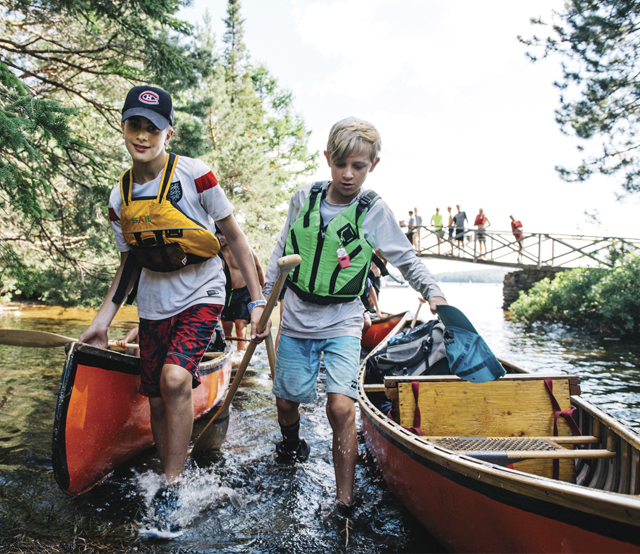
For busy parents with younger children, summer camp is an increasingly appealing option to get kids outside and on the water. Today, this tradition with century-old roots in Ontario, New England, Illinois, Minnesota and Wisconsin, has become a critical antidote to electronic gadgetry.
“Camp has always been a way to get the kids off the couch,” says Nick Georgiade, the North Carolina-based director of Camp Temagami, a canoe camp located in northern Ontario. “But now parents are concerned their children are unable to handle face-to-face social interactions.”
Like most summer camps, Georgiade outlaws mobile devices at his facilities on Lake Temagami and on the camp’s two to six-week long canoe trips. “Kids are forced to look at each other and get along,” he says.
“Camp has always been a way to get the kids off the couch.” But now parents are concerned their children are unable to handle face-to-face social interactions.”
Beyond the traditional camp selling points of self-confidence, teamwork and encounters with nature, unplugging has become “a bigger and bigger deal” for parents, Georgiade says. Meanwhile, enrollment at youth camps is surging. Camp Temagami’s jumped 30 percent in 2016, including a growing number of young women.
Increased enrollment is a parallel trend. “In the last five years we’ve seen a huge resurgence,” says Andy Gruppe, General Manager of Ontario’s YMCA Wanakita. This year, Gruppe says the camp filled up one month ahead of its regular time. He estimates enrollment to be up by 70 campers.
According to a 2015 report prepared by American Canoeing Association’s research assistant Cait Wilson, camper enrollment is also on the rise. Eighty-two percent of camps reported overall enrollment as the same or higher than in 2014. Additionally, 44 percent of camps reported the summer of 2015 as having the highest enrollment in the last five years. Kids, too, are getting bitten with the proverbial outdoor bug early. The report found that 71 percent of campers are now aged 12 and younger.
Study after study shows that adults who were exposed to the outdoors as children were more likely to participate in the outdoors during adulthood. In fact, 37 percent of adults who were introduced to the outdoors during childhood grew up to enjoy outdoor activities as adults. Increased summer camp enrollment can be nothing but good news for canoeing down the road.
The Outdoor Foundation’s Outdoor Recreation Participation Top Line Report released in April, 2017 pegged canoeing along with running and jogging, hiking, backpacking and fishing in the top ten most appealing aspirational activities among every age group from 25 to 45-plus.
Canoeing is cool again and there exists a huge opportunity for manufacturers, outfitters and canoe clubs to engage these non-participants. Combine this mass appeal with Baby Boomers upgrading boats, Busters getting around to having kids, and Millennials carving out a few days here and there, one might say that canoeing is trending. #canoeinglives.
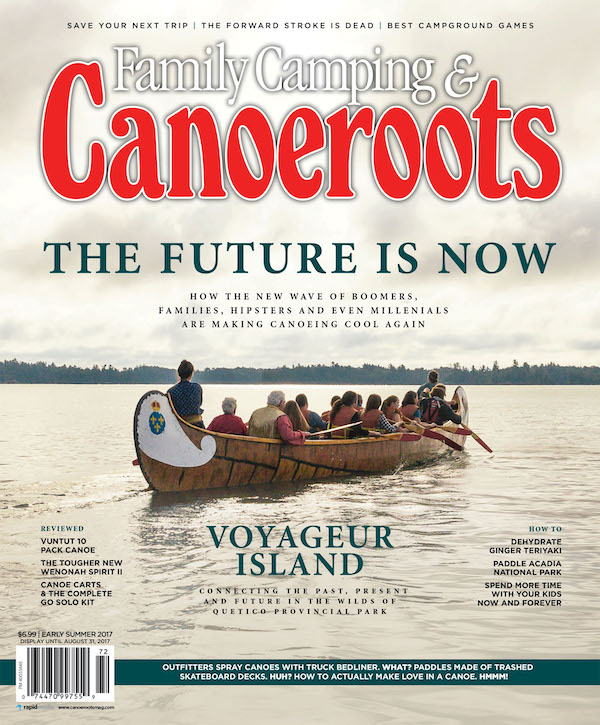 This article originally appeared in Canoeroots Early Summer 2017 issue.
This article originally appeared in Canoeroots Early Summer 2017 issue.
Subscribe to Paddling Magazine and get 25 years of digital magazine archives including our legacy titles: Rapid, Adventure Kayak and Canoeroots.



